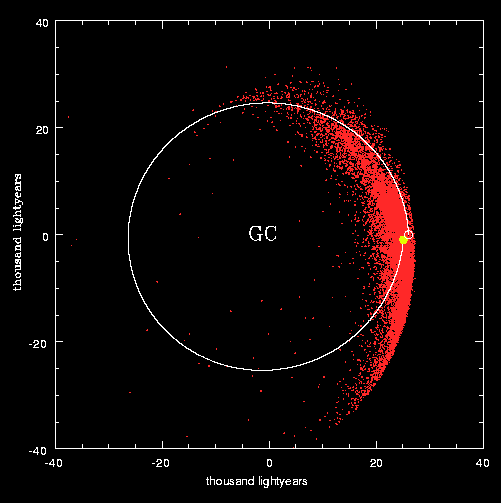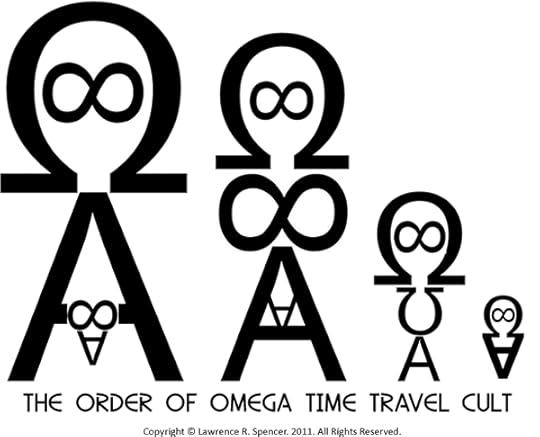HAPPY YEAR(s)
Republished by Blog Post Promoter
Time is relative to the point of view of the observer. Regardless of your respective definition of a “year”, you are traveling through time in the physical universe, as measured by one or more monitoring systems devised by man to track the motion of particles through space. Here is a short list of definitions of the word “year”.
(Visualization of the orbit of the Sun (yellow dot and white curve) around the Galactic Centre (GC) in the last GALACTIC YEAR. The red dots correspond to the positions of the stars)
The galactic year, also known as a cosmic year, is the duration of time required for the Solar System to orbit once around the center of the Milky Way Galaxy.[1] Estimates of the length of one orbit range from 225 to 250 million “terrestrial” years. Solar System is traveling at an average speed of 828,000 km/h (230 km/s) or 514,000 mph (143 mi/s),which is about one 1300th of the speed of light. If you could travel at that speed in a jet aircraft along the equator, you would go all the way around the world in approximately 2 minutes and 54 seconds. Even at this speed, it still takes the solar system 230 million years to orbit the center of the Milky Way Galaxy one time. Hang on and enjoy the ride!
For those who prefer shorter periods of time, here are a list of the Wikipedia definitions of other “years”
2 Seasonal year3 Calendar year3.1 Numbering calendar years4 Other annual periods4.1 Fiscal year4.2 Academic year5 Astronomical years5.1 Julian year5.2 Sidereal, tropical, and anomalistic years5.3 Draconic year5.4 Full moon cycle5.5 Lunar year5.6 Vague year5.7 Heliacal year5.8 Sothic year5.9 Gaussian year5.10 Besselian year5.11 Variation in the length of the year and the day5.11.1 Numerical value of year variation5.12 Summary6 Symbol6.1 Symbol a6.1.1 SI prefix multipliers6.2 Symbols y and yr7 “Great years”7.1 Equinoctial cycle7.2 Galactic yearThis message has been transported to you as a public service by the Order of Omega Time Travel Cult family!





